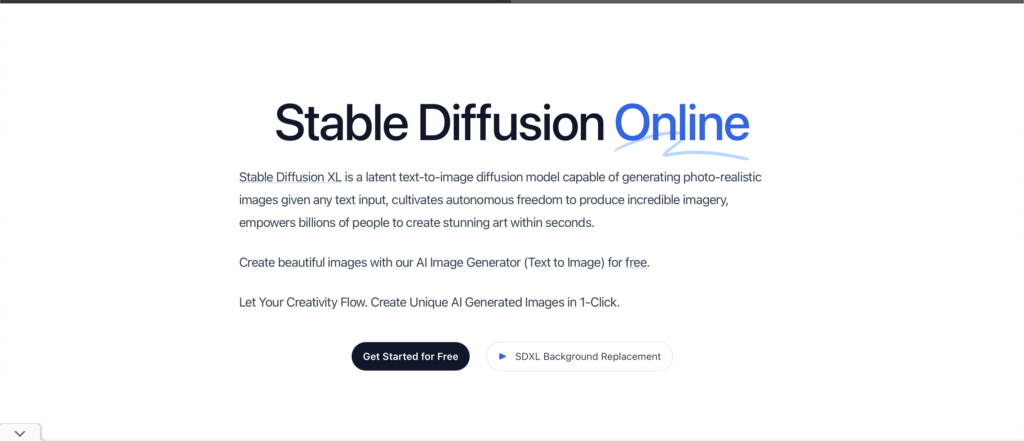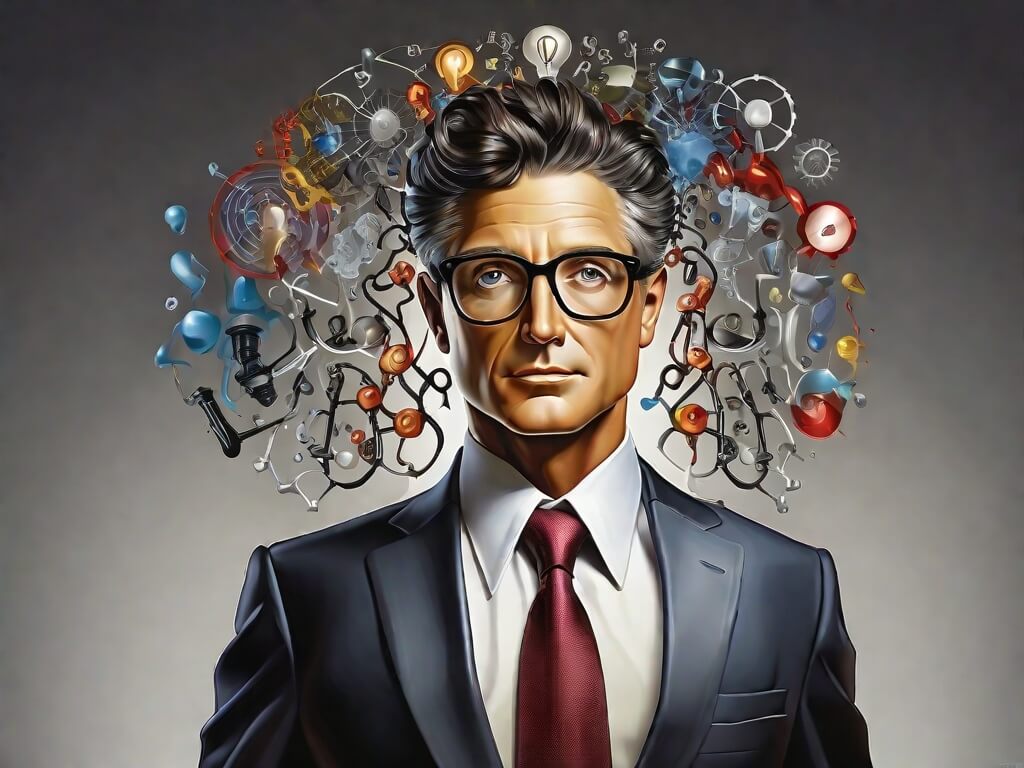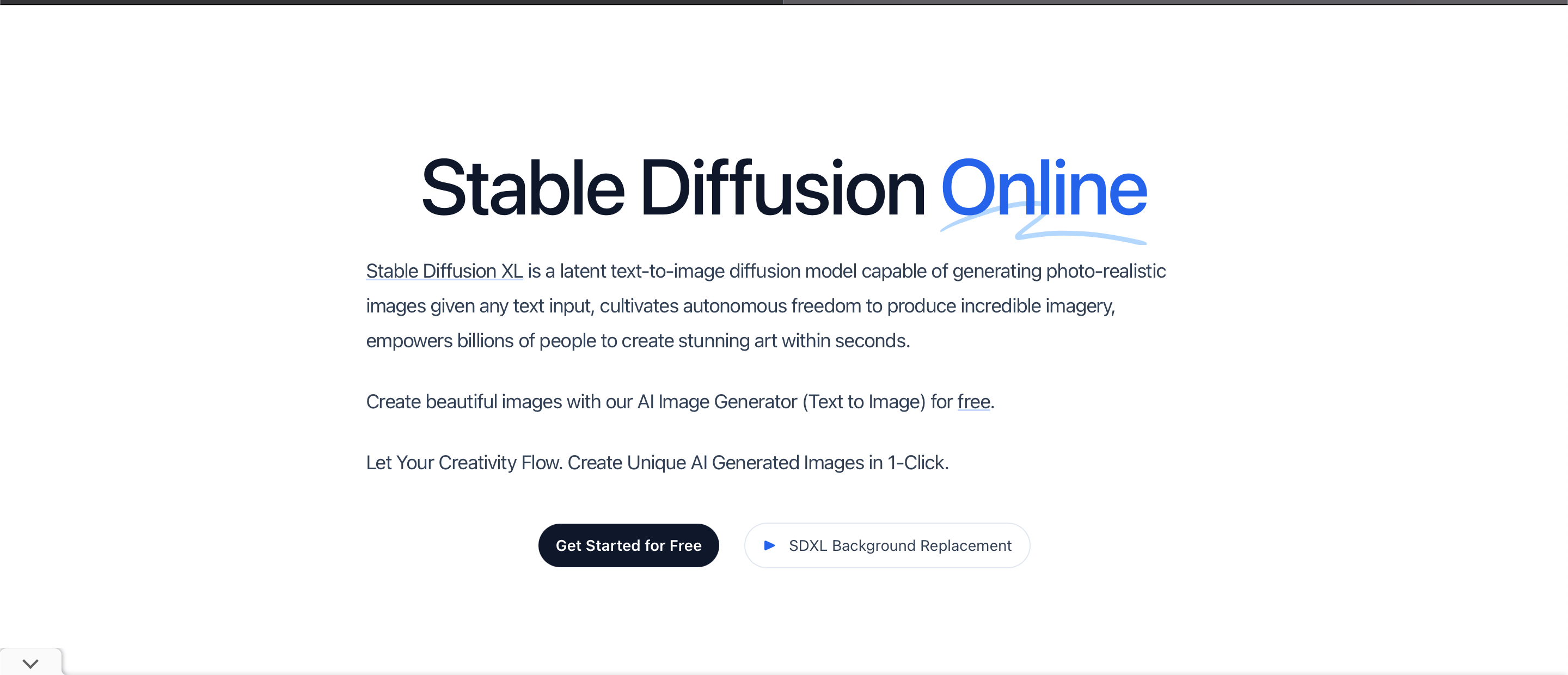Originally released to the world in 2022, stable diffusion is a technology based on generative artificial intelligence that uses textual and visual inputs and transforms them into images with overtones of photorealism.
Stable diffusion opens a world of creative possibilities that allows your imagination to materialize into images specifically generated to evince forth the artistic beast in you.
With the combined prowess of digitally smart algorithms and the adroitness of fine-tuning, you can paint colors of creativity onto a pallid canvas. Stable diffusion is the genesis of your next big project, with endless possibilities for promethean creators.
Read till the end to find out about the best stable diffusion models and how you can use them to the best of your capabilities!
What Are Stable Diffusion Models?

At the very core, a Stable Diffusion model is an AI based technology that allows users to translate their imaginations into images of any art style by simply typing in text prompts describing what your image looks like in your mind’s eye.
They are based on highly trained datasets that encompass a huge range of styles. Thus, Stable Diffusion models are remarkably apt at generating images tailored to one’s style of choice. But before delving into the realm of endless possibilities, here are a few things you need to know if you’re a beginner.
.cpkt vs .safetensor

Now, it is almost crucial for you to understand Stable Diffusion in order to streamline its usage and make the whole process a lot more productive, facile, and lucrative. The first thing you need to know is the types of files used.
Stable diffusion essentially revolves around the use of two file types: .safetensor and .cpkt. Cpkt files are generally not preferred due to the use of a pickle module, which is, more often than not, maliciously exploited.
To summarise, both .safetensor and .cpkt make use of the same dataset to produce images. However, .safetensor is considered a safer option.
Stable Diffusion V1 vs V2
Stable diffusion models make image generation a breeze by simply bringing your imaginary designs to life. This cutting edge technology has left many enamored and wondering how all this is possible.
Well, to fathom the operational basis of this model, we need to discuss the two versions of this echt technological model.
The main difference between the two is the text encoder each uses. V1 uses OpenAI’s CLIP – an open-source model trained on a dataset that is not publicly available. The most important highlight of V2 is that it’s based on OpenCLIP – a version of CLIP trained on a dataset that is known to the public.
The Best Stable Diffusion Models
Now that we have discussed, in little detail, how things work in the realm of Stable Diffusion, it’s about time we learn about the best Stable Diffusion models available on the market. Without further ado, let’s take a look at the list.
Realistic Vision
Topping our list is Realistic Vision, an impeccably precise image generator specialized in creating photorealism – one of the most difficult art styles since it requires herculean effort to fool our eyes and trick it into overseeing even the most frivolous of subtleties.
We tested the model by creating a portrait of a woman against a white backdrop, which it was able to create with impressive accuracy and inerrancy.
The details were elaborate and overlayed the nuances and specifics of photorealism. Anyone looking to generate photos that look like they might start speaking any moment should definitely try this software out.
DreamShaper
At number two, we have another amazingly powerful and smart Stable Diffusion model – the DreamShaper – that uses its cutting-edge technology to create images with an inclination toward illustrative art style.
DreamShaper – thanks to its artistic finesse – generated a particularly intricate portrait that brilliantly encapsulated the essence of illustrations, along with capturing and reproducing the complex geometric overlays and hues that are characteristic of illustrative art styles.
This software is for anyone searching for a model that creates strikingly realistic illustrations. You can even fine-tune generations by setting some parameters that would further enhance image generation and take it up a notch.
MeinaMix
MeinaMix is another Stable Diffusion model targeting the illustrative art style while also ameliorating it further by giving it a distinctive painting-like appearance. This model highly focuses on accents of animesque styles – a Japanese art form – and creates portraits that are centered around this art form.
With MeinaMix, you can create images that punctuate every little datum and element, the beauty of this highly complex style. If you are someone looking to create images featuring anime characters or art style, Meinamix is one of the best Stable Diffusion models out there.
AbyssOrangeMix3
Another brilliant Stable Diffusion model that is capable of generating strikingly high-quality and vibrant visuals that are loosely based on the anime art style.
AbyssOrangeMix3 needs little textual input and guidance from users to create stunningly detailed, meticulously crafted, and precise compositions that are not only accurate in their generation but also intricate and engaging in their appeal. AbyssOrangeMix3 is for anyone looking to pursue their Japanese aesthetic art style.
Deliberate
This Stable Diffusion model dives into the amalgamative product of realism and digital art, celebrating the unique prospect of images that are a combination of verismo and naturalism. Deliberate requires a highly specific input of prompts to streamline and refine the process of image generation.
During our testing, Deliberate was able to create highly focused and detailed portraits with backgrounds that were evidence of its capability to overlay and overlap textures to attain the perfect visual impression. Deliberate is able to capture the beauty of realism and augment it further with its intensely trained models. Anyone who is looking for realistic image generation should, for sure, give Deliberate a go.
How To Use Stable Diffusion Models 101

We have gone through the list of the best Stable Diffusion models, and now is the time to learn how to use one. Follow these simple and easy steps below to know how to use one.
Step 1: The Essentials
Before starting on this wondrous, creativity laden adventure, you need to acquire the basics. AUTOMATIC1111 Web UI, a browser interface based on Gradio Library that allows users to manage and run their AI image generation models, is one of the first things you need to have. This indispensable tool will be an immense help to you tread and then fly through this world rich in potentialities and possibilities.
Step 2: The Repository
Civitai – an internet omnium-gatherum of Stable Diffusion models is your navigation tool to help you peregrinate through the colossus of models. It allows users to access a macédoine and sift through various categories.
Step 3: Model Migration
Once you’ve handpicked the models you want, the next step is to neatly nestle and assort them in AUTOMATIC1111 into the chosen diffusion model directory. This step ensures that all your files are safely tucked away and makes way for you to unleash your creative powers.
Step 4: Paint Your Heart Away
Now is the time to paint in the vacuity of the canvas with the brushstrokes of your imagination, using the models as an adjunct in the process. Let your imaginations grow wild, infuse them with the soul of creativity, and see the precipitate into images on your computer in just a matter of minutes. This is your kingdom, rule it with the peremptory powers of creativity – with Diffusion Stable models at your service.
Conclusion
Stable Diffusion models are the next big thing – they are supplemental tools to give you wings on this prodigious odyssey of imaginative creativity.
With the bettering and refining of AI tools, Stable Diffusion has become exceedingly smart at replicating details, picking styles from art forms, and reproducing them in images generated. If you are an artist looking to generate images, check out our list above.

